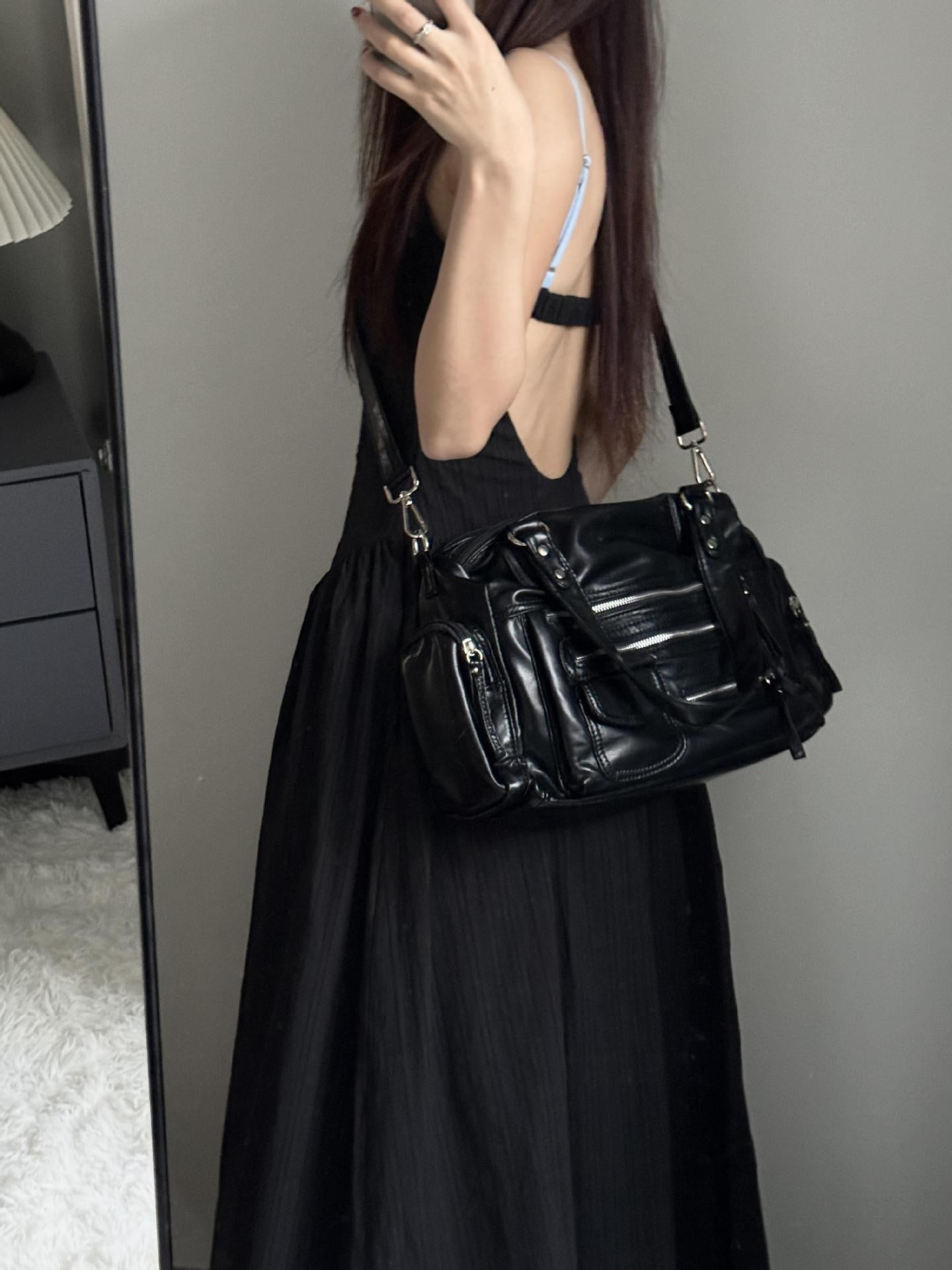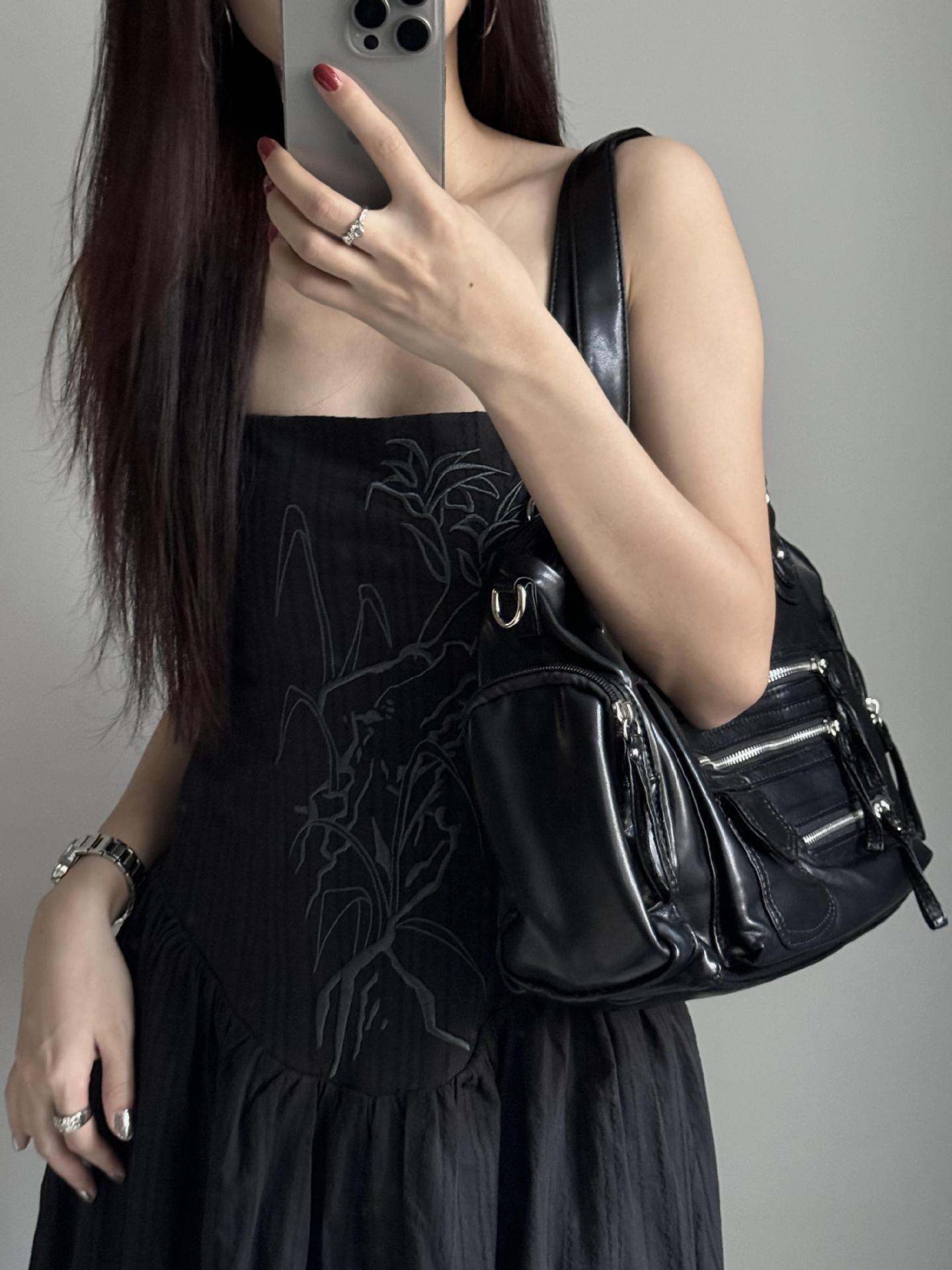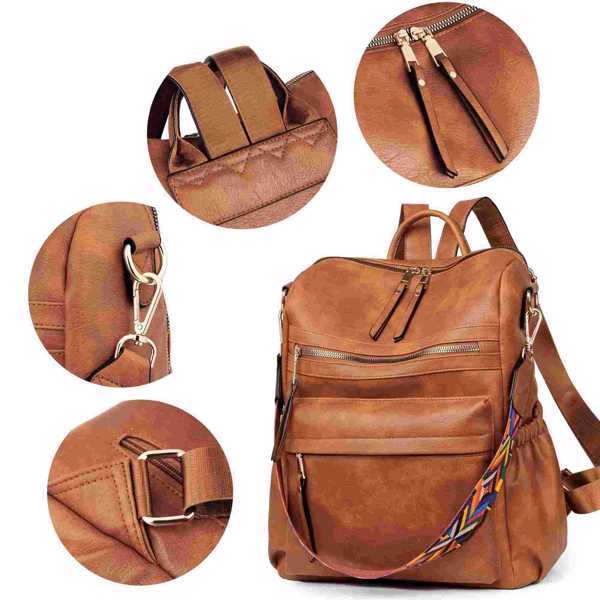
What are the pros and cons of different handbag materials (leather, canvas, nylon, etc.)?
Choosing the right handbag material is like choosing the right tool for a job – it depends entirely on what you need it to do! Each material brings its own set of strengths and weaknesses to the table. As your fashion expert, I'm here to give you a clear and concise breakdown of the pros and cons of the most popular handbag materials. Think of this as your material cheat sheet for handbag shopping!
Let's compare the main contenders: Leather, Canvas, Nylon, and Vegan Leather (with PU and Plant-Based distinctions):
|
Material |
Pros |
Cons |
Best For |
|
Leather (Genuine) |
- Classic, luxurious look and feel. - Can be very durable (esp. full-grain & top-grain). - Develops patina over time. - Can be water-resistant (esp. treated). |
- Can be expensive (esp. higher grades). - Requires regular care (conditioning). - Can be heavy. - Not cruelty-free. - Susceptible to scratches/water damage if untreated. |
- Everyday elegance. - Investment pieces. - Bags meant to age beautifully. - Work/professional settings. - Formal occasions. |
|
Canvas (Waxed) |
- Very durable and rugged. - Water-resistant (waxed). - Often lightweight. - Can be stylishly casual. - Easier to clean than leather (spot cleaning). - More affordable than leather. |
- Can feel stiff initially (waxed). - Style can be very casual, less formal. - May not be as "luxurious" looking as leather (depending on style). - Can show wear over time (fading). |
- Everyday casual use. - Errands and shopping. - Outdoor activities/travel. - Work settings where ruggedness is prioritized. |
|
Nylon (Ballistic/Ripstop) |
- Extremely durable and abrasion-resistant. - Very lightweight. - Water-resistant (often waterproof). - Easy to clean (often machine washable). - Often more affordable than leather or canvas. - Very practical. |
- Can look less "luxurious" or "stylish" than leather or canvas. - Style tends to be very casual/sporty. - Can snag or tear (though ripstop resists spreading). - Not as breathable as natural fibers. |
- Travel and commuting. - Active lifestyles. - Everyday practical use. - Situations where water resistance and lightness are key. |
|
Vegan Leather (PU) |
- Often more affordable than genuine leather. - Cruelty-free. - Water-resistant. - Wide variety of styles and colors. - Easier to clean than leather (generally). |
- Durability can vary; lower quality PU less durable than high-grade leather/canvas/nylon. - Can be less breathable than leather. - Plastic-based (environmental concerns for traditional PU). - May not develop patina. |
- Budget-conscious shoppers seeking leather look. - Everyday casual use. - Wet weather conditions. - Ethically motivated purchases (with awareness of material origins). |
|
Vegan Leather (Plant-Based - Piñatex, Mushroom, etc.) |
- Cruelty-free. - More sustainable/eco-friendly than animal leather and traditional PU. - Can be durable (some options). - Often water-resistant. - Innovative and unique textures. - Emerging as high-quality alternatives. |
- Newer materials, long-term durability still being assessed for some. - Can be more expensive than traditional PU vegan leather (but sometimes comparable to leather). - Style range still evolving but expanding rapidly. |
- Ethically and environmentally conscious shoppers. - Trend-forward fashion. - Seeking unique, sustainable materials. - Everyday use with a focus on values. |
Export to Sheets
Key Takeaways for Choosing Your Material:
-
For Classic Elegance and Investment Value: Leather (especially full-grain or top-grain). Leather handbags offer timeless style, can be incredibly durable, and develop character over time. Be prepared to invest more and provide regular care.
-
For Rugged Practicality and Everyday Durability: Waxed Canvas or Ballistic Nylon. These materials are built to withstand daily wear and tear, often offering excellent water resistance and ease of cleaning. They are ideal for busy lifestyles, travel, and casual use.
-
For Budget-Friendly and Cruelty-Free Style: Vegan Leather (PU). PU vegan leather provides a more affordable and ethical alternative to leather, often with good water resistance and a wide range of styles. Be mindful of durability variations and the plastic origin.
-
For Sustainable and Innovative Style: Plant-Based Vegan Leather (Piñatex, Mushroom Leather, etc.). Plant-based vegan leathers represent the future of ethical and eco-conscious fashion. They offer sustainability, cruelty-free ethics, and often exciting new textures and aesthetics. Be prepared for a potentially higher price point (for now, as the technology develops).
Consider Your Lifestyle and Needs:
Ultimately, the "best" material is the one that best suits your lifestyle, needs, and values. Think about:
-
How will you use the bag? (Everyday, work, travel, special occasions?)
-
What is your budget?
-
Are ethical or environmental considerations important to you?
-
What style and aesthetic do you prefer?
-
How much care and maintenance are you willing to do?
By weighing these factors and understanding the pros and cons of each material, you can confidently choose a handbag that's not just beautiful, but perfectly aligned with your practical needs and personal values. Happy material-wise shopping!






Leave a comment
This site is protected by hCaptcha and the hCaptcha Privacy Policy and Terms of Service apply.